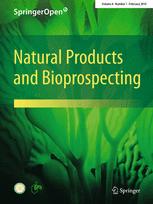|
|
Manuka honey: an emerging natural food with medicinal use
Collect
Seema PATEL, Simon CICHELLO
Natural Products and Bioprospecting. 2013, 3 (4): 121-128.
DOI: 10.1007/s13659-013-0018-7
The health value of honey is universally acknowledged from time immemorial. Manuka (Leptospermum scoparium) is a tree, indigenous to New Zealand and South East Australia, and from the myrtle family, Myrtaceae. The honey produced from its flowers is a uni-floral honey largely produced in New Zealand. It is becoming increasingly popular as a functional food, seen in the aisles of health stores as its displays superior nutritional and phytochemistry profile over other varieties of honey. Examining existing research databases revealed its biological properties ranging from anti-oxidant, anti-inflammatory, anti-bacterial, anti-viral, anti-biotic and wound healing to immune-stimulatory properties. Methylglyoxal is the unique compound in the honey responsible for some of its potent anti-microbial properties. Further, propolis another component of honey contains chiefly flavonoids (i.e. galangin, pinocembrin), phenolic acids and their esters that may also contribute to its immuno-stimulant properties. Recent findings of the biological roles have been discussed with emphasis on the underlying mechanisms. The hurdles associated in its development as a functional food and also nutraceutical with future scopes have also been mentioned. Relevant data published in MEDLINE, Cochrane library, and EMBASE in the past decade have been gathered to formulate this review.
References |
Related Articles |
Metrics
|
|
|
Induced biosyntheses of a novel butyrophenone and two aromatic polyketides in the plant pathogen Stagonospora nodorum
Collect
Xiao-Long YANG, Takayoshi AWAKAWA, Toshiyuki WAKIMOTO, Ikuro ABE
Natural Products and Bioprospecting. 2013, 3 (4): 141-144.
DOI: 10.1007/s13659-013-0055-2
Fungal aromatic compounds comprise an important and structurally diverse group of secondary metabolites. Several genome sequencing projects revealed many putative biosynthetic gene clusters of fungal aromatic compounds, but many of these genes seem to be silent under typical laboratory culture conditions. To gain access to this untapped reservoir of natural products, we utilized chemical epigenetic modifiers to induce the expression of dormant biosynthetic genes. As a result, the concomitant supplementation of the histone deacetylase inhibitors suberoylanilide hydroxamic acid (500 μM) and nicotinamide (50 μM) to the culture medium of a fungal pathogen, Stagonospora nodorum, resulted in the isolation of three aromatic compounds (1-3), including a novel natural butyrophenone, (+)-4'-methoxy-(2S)-methylbutyrophenone (1), and two known polyketides, alternariol (2) and (-)-(3R)-mellein methyl ether (3).
References |
Related Articles |
Metrics
|
|
|
Four new diterpenoids from Isodon eriocalyx var. laxiflora
Collect
Wei-Guang WANG, Xue DU, Xiao-Nian LI, Bing-Chao YAN, Min ZHOU, Hai-Yan WU, Rui ZHAN, Ke DONG, Jian-Xin PU, Han-Dong SUN
Natural Products and Bioprospecting. 2013, 3 (4): 145-149.
DOI: 10.1007/s13659-013-0057-0
Four new diterpenoids, laxiflorins S-V (1-4), bearing four different types, and one known compound, laxiflorin O (5), were isolated from Isodon eriocalyx var. laxiflora. Compound 1 was the first example of ent-kauranoids bearing a unique C24 carbon framework and compound 4 was the first example of 3,4-seco-ent-abietane diterpenoids from the Isodon genus. Their structures were determined by spectroscopic methods (UV, IR, MS, NMR).
References |
Related Articles |
Metrics
|
|
|
New benzene derivatives from cultures of ascomycete Daldinia concentrica
Collect
Tao FENG, Zheng-Hui LI, Xia YIN, Ze-Jun DONG, Gang-Qiang WANG, Xing-Yao LI, Yan LI, Ji-Kai LIU
Natural Products and Bioprospecting. 2013, 3 (4): 150-153.
DOI: 10.1007/s13659-013-0048-1
Three new benzene derivatives, named daldins A-C (1-3), together with a known analogue, 2-hydroxymethyl-3-(1-hydroxypropyl) phenol (4) have been isolated from cultures of ascomycete Daldinia concentrica. The structures of 1-4 with absolute configuration were established by means of spectroscopic methods and X-ray diffraction. All compounds showed no significant inhibition on five human cancer cell lines with IC50 values > 40 μmol.
References |
Related Articles |
Metrics
|
|
|
Two new drimane sesquiterpenoids from cultures of the basidiomycete Trichaptum biforme
Collect
Xiao-Yan YANG, Tao FENG, Jian-Hai DING, Zheng-Hui LI, Yan LI, Qiong-Ying FAN, Ji-Kai LIU
Natural Products and Bioprospecting. 2013, 3 (4): 154-157.
DOI: 10.1007/s13659-013-0030-y
Two new drimane sesquiterpenoids (1 and 2), as well as five known compounds (3-7), were isolated from the basidiomycete Trichaptum biforme. The structures of new compounds were elucidated by extensive spectroscopic methods, and the known compounds were identified by comparing their spectroscopic data with those reported in the literature. The cytotoxicities results against five human cancer cell lines of compounds 1 and 2 were negligible.
References |
Related Articles |
Metrics
|
|

